The MF 590; a very desirable cabbed classic!
Posted by Chris Graham on 10th January 2024
The largest of Massey Ferguson’s British-built 500 Series, the MF 590, is certainly worth considering when buying a cabbed classic.
All photos: AGCO (unless stated).
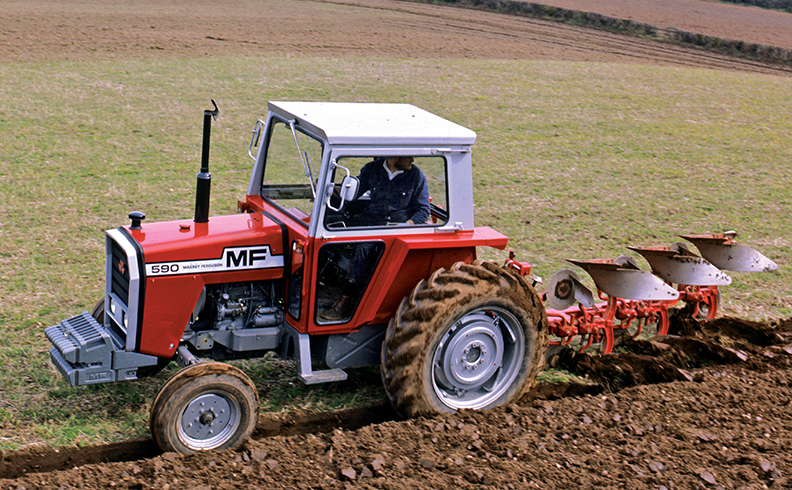
The 75hp (DIN) MF 590 was the largest 500 Series model to be built at Banner Lane, in Coventry. A ‘saddle’ fuel tank (seen between the step and the cab) kept the centre of gravity low, which was a bonus given the 590’s lofty stature.
Following a range of tractors that enjoyed critical acclaim was never going to be easy, but on the whole Massey Ferguson got it about right with the 500 Series.
The company’s hand was forced somewhat, due to incoming noise legislation, as if it were not for that the 100 Series may have continued to be produced. A new cab, however, brought the opportunity to refresh MF’s tractor offering – albeit with familiar skid units under the new panels.
Massey Ferguson claimed that these tractors were new from the ground up, but acknowledged that the 500 Series had been designed as ‘part of a continuous programme of product evolution.’ Indeed, improvements had been made throughout the skid unit, but the cab was the most obvious difference to the new range.
The French-built Massey Ferguson 595 was the first of the new range to appear in 1974, as a replacement for the 1080, but the remaining four models for the UK market were launched later, in 1976. Due to their power ratings, two of these five models stood out for British farmers – the 60hp (DIN) MF 565 and 75hp (DIN) MF 590.
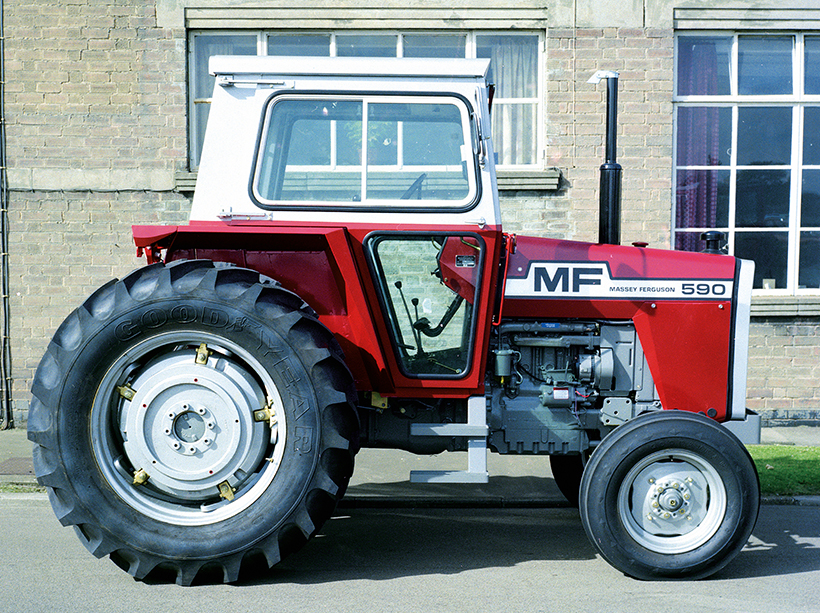
The first iteration of the two-door cab retained the two-tone livery. Note the sliding window.
Following the success of the 165, and because 60hp was still considered to have enough power by many, the 565 would be the best-selling model in the range, but the 590 was deemed to be ‘about right’ for those that wanted to up the ante.
Built at Banner Lane, Coventry, and in France, it had plenty going for it, including the option of a driven front axle, and continues to represent a sound investment for those looking for a basic tractor that can be used as it was intended, as well as enjoyed at events.
Powered by the Perkins A4.248S, a four-cylinder unit with a five-inch stroke, developing 202.5lb/ft (274.5Nm) of torque at 1,400rpm, the 590 has plenty of grunt and will pull a three-furrow reversible plough or big cultivator with relative ease, but it is equally at home with a sprayer or fertiliser spreader, where its manoeuvrability gives it an edge over larger tractors.
Direct injection and renowned reliability mean it starts as well as it pulls and will continue to give good service even as the hours rack up. You should have no qualms about buying a 590 with 5,000 hours on the clock, and providing it’s been regularly maintained, a tractor with 8-10,000 hours should still be a safe bet.
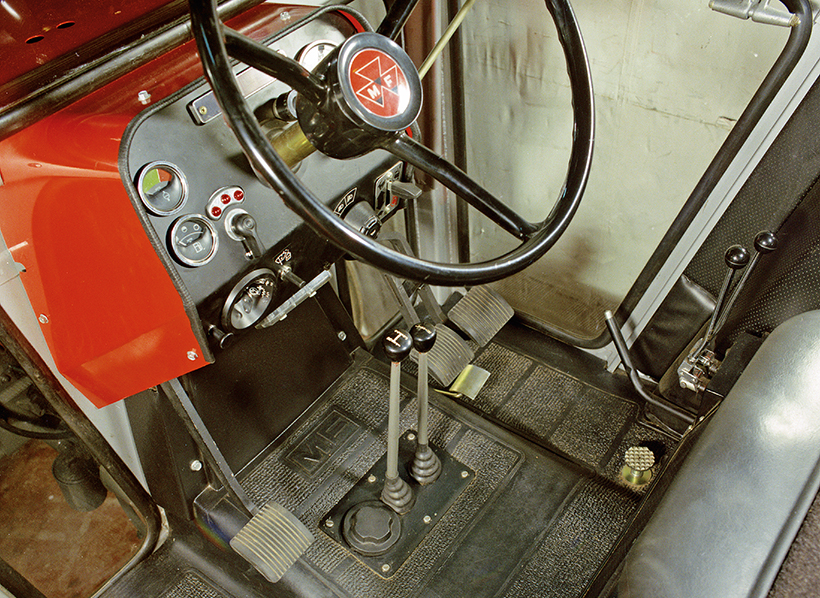
A Massey Ferguson 590 fitted with the 12-speed Multi-Power transmission.
Late addition
In terms of transmissions, it was a case of better the devil you know – with the eight-speed unit fitted as standard (four forward, one reverse, and two ranges), and the 12-speed Multi-Power system as an option – which added £373 to the list price.
Synchro 12 replaced the eight-speed unit on some of the very last 590s as the standard fitment, and this provided 12 forward and four reverse speeds via a three-lever arrangement.
The right-hand lever selected high or low range, while the left-hand lever enabled selection of three forward gears and one reverse (with synchromesh on second and third gears). The centre lever was essentially a ‘splitter’ that had to be used in conjunction with the clutch pedal – a synchronised overdrive/underdrive if you will. This is a rare find on any 500 Series model.
A dual clutch was standard on the 590, but you could also opt for an independent power take-off. Many tractors were specified with iPTO, and it certainly provides a more modern feel.
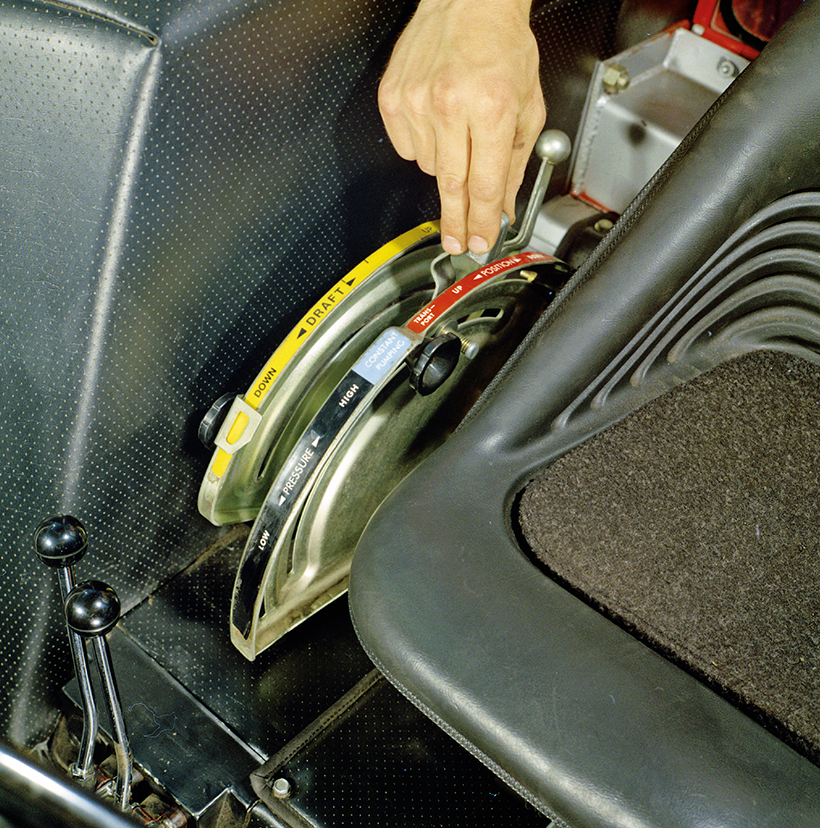
The quadrant will be familiar to MF users, with Draft Control separated from Position and Pressure Control. Up to three spool valves could be specified, but here two are fitted.
A two-speed PTO was fitted as standard, with 65.2hp available at the shaft at 540rpm, and 65.5hp at 1,000rpm – which meant that a trailed forage harvester or three-metre power harrow could be handled by the tractor at or less than 1,900rpm (engine). The six-spline shaft was interchanged with a 21-spline shaft when necessary.
Also fitted as standard was a 5.7gpm (25.7 litres per minute) pump for the hydraulic system that operated at 3,000psi. This was said to be a best-in-class feature, providing an excellent tear-out force for loaders, and proving ideal for tipping large trailers.
Where iPTO and/or Multi-Power were specified, an additional 7.7gpm (35 litres per minute) pump was also fitted. The flow of these can be combined to provide 13.4gpm (61 litres per minute), which is great for auxiliary hydraulic applications, including reduced loader cycle times.
The three-point linkage controls were much as they were on the 100 Series, with the Ferguson System at their heart. A piston-type pump, with a multi-function valve on the suction side, remained – but improvements were made to increase flow, increase strength, and make servicing easier.
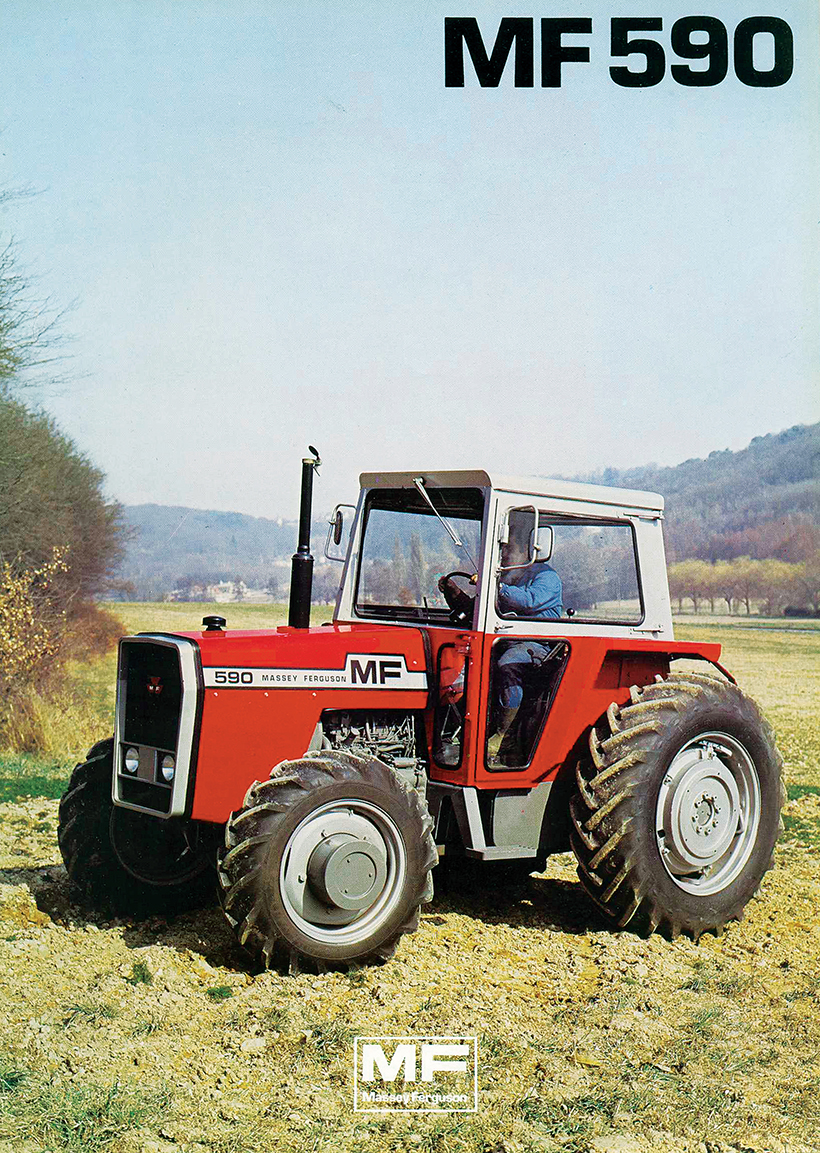
The first four-wheel-drive models featured an axle with five-stud hubs. (Pic: The Massey Ferguson Historian)
Lift capacity at the end of the lower links was 4,900lb (2,227kg) as standard, but an assistor ram could be specified to increase capacity by 917lb (416kg).
Four elements were incorporated to enable a multitude of jobs to be undertaken with the tractor – Draft Control, Position Control, Response Control, and Pressure Control. The latter enabled the tractor, with the aid of a special hitch, to transfer weight from trailed implements to the rear axle of the tractor to increase traction.
Those looking for even more traction could specify four-wheel drive, but it is rare to find one of these for sale today. This option was available from 1977 and added £2,553 to the list price of an eight-speed 590, and £2,145 to the list price of a Multi-Power tractor. To put this into perspective, the additional cost would have enabled you to buy an MF 26 10-ton tipping trailer, with an extra or two, and still have some change!
Four-wheel drive tractors were fitted with 11.2/10-24 front tyres, on pressed steel rims, with no options available. The driven front axle was changed to a different design in the latter half of 1978, with the large, five-stud hubs giving way to a smaller, six-stud hub arrangement. Both featured centre drive and good ground clearance.
A four-wheel 590 is hard to obtain, but particularly one with the earlier front axle.
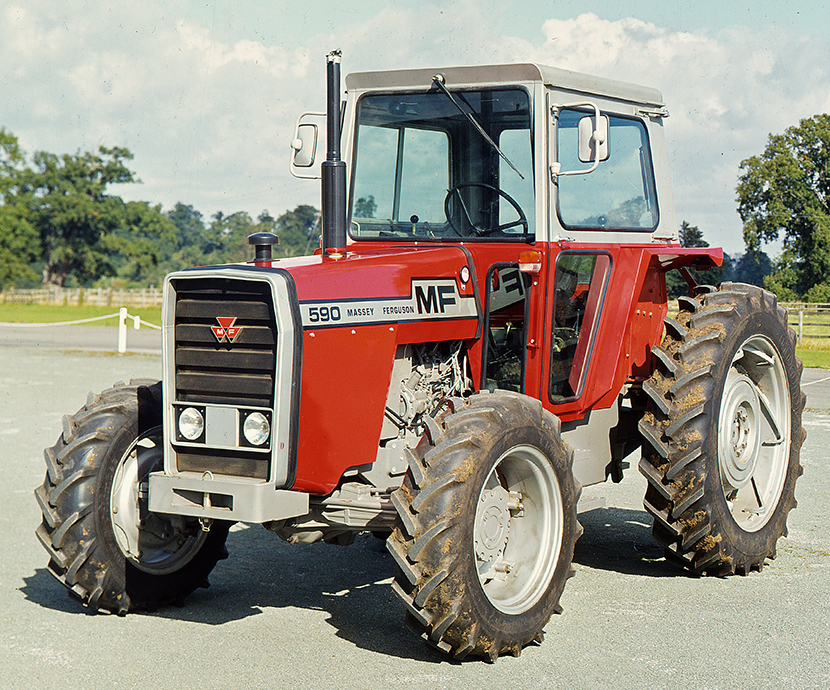
A revised front axle design was used from the latter part of 1978.
Supercab changes
The Supercab also experienced changes throughout the lifespan of the 500 Series, with a change from single-door design to two-door configuration in July ’79, and a colour change from red/silver to all red (with just the roof silver) in 1980.
The two-door cab features a sliding right-hand window, rather than the top-hinged pane you’ll find on a single-door cab. Which cab is best will come down to personal preference, but most users only enter through a tractor’s left-hand door anyway!
Today, you can pick up a 590 relatively easily, and there are examples to suit all budgets, but it is surprising how the number of these tractors for sale has decreased in the last 20 years – due to the 500 Series’ suitability for export.
You can expect to pay £4,500-5,000 for a rough, off-farm tractor, at least £15,000 for a mint, original tractor, and around £10,000 for a well restored example. There is little or no difference between the price of one- and two-door models, but four-wheel drive tractors tend to command more than their two-wheel drive siblings.
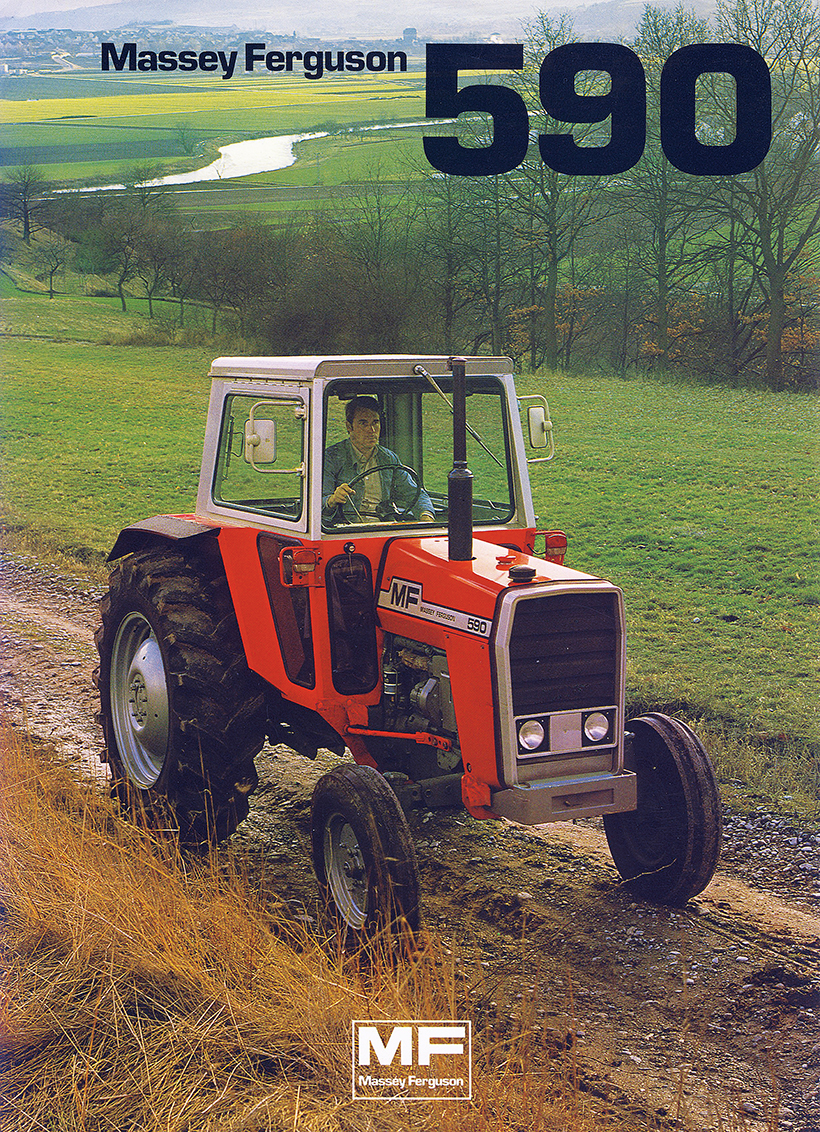
An MF 590 for the German market. Note the fender design. (Pic: The Massey Ferguson Historian)
If you’re looking for something different, it’s possible to pick up a 590 that was destined for a country other than the UK – as there were subtle differences in other markets. In Germany, for example, the fender design was altered, and the cab was different in Australia, as was the fitment of a spark arrestor exhaust (which was also a feature for other countries).
You will also find differences in terms of trailer hitching, across Europe, and although it may seem unlikely that you will come across such 590s in the UK, many have been imported by specialists over the years, and some continue to appear at auction – with Cheffins’ monthly sale an obvious example.
Parts, both genuine and aftermarket, are generally easy to come by, but breakers can help with any items that prove more troublesome – such as panels.
The MF 590 is an attractive proposition for those looking for a cabbed classic. A well-maintained example is still fit to be put to work, but it’s also a tractor that’s equally at home on the show and event circuit. At 7,448lb (3,378kg), you need to be geared up or prepared to have your wallet hit if you’re moving one any great distance, but this is not something that is relevant to all.
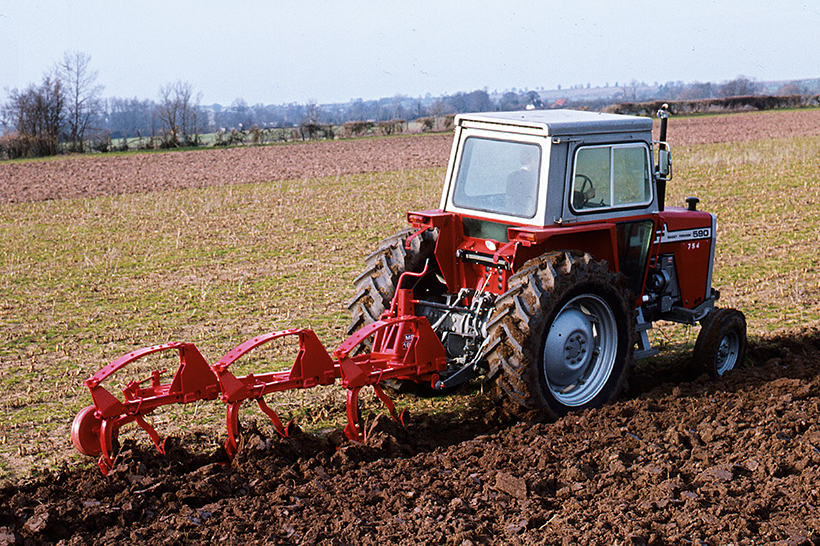
An early, two-door tractor at work with a Huard-built MF 160 plough.
Simple, capable, and (T&M thinks) easy on the eye, the MF 590 is often overlooked, but is worth considering if you want a tractor that will perform like the larger models in the 100 Series, but has a few more creature comforts.
This feature comes from the latest issue of Tractor & Machinery, and you can get a money-saving subscription to this magazine simply by clicking HERE

Previous Post
Amazing stationary engines on display at Amberley Working Museum

Next Post
Steam ploughing Hands-on Weekend in sunny Kent



